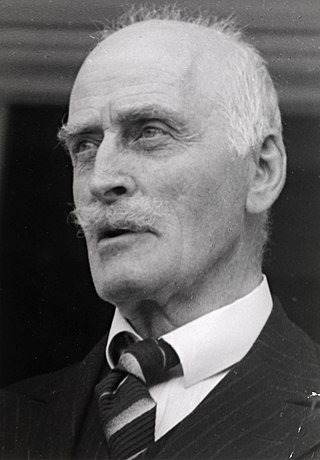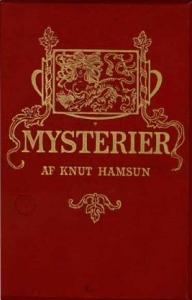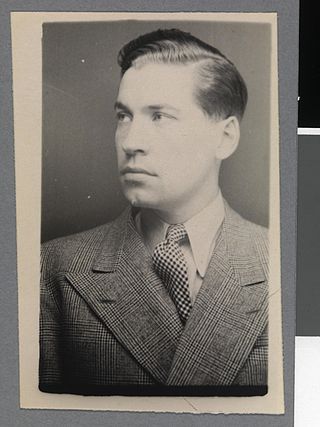
Knut Hamsun was a Norwegian writer who was awarded the Nobel Prize in Literature in 1920. Hamsun's work spans more than 70 years and shows variation with regard to consciousness, subject, perspective and environment. He published more than 23 novels, a collection of poetry, some short stories and plays, a travelogue, works of non-fiction and some essays.
In Wonderland is a travelogue written by Knut Hamsun in 1903. It documents Hamsun's impressions during his visit to the Russian Caucasus, Persia and Turkey in 1899.

Mary Chavelita Dunne Bright, better known by her pen name George Egerton, was a writer of short stories, novels, plays and translations, noted for her psychological probing, innovative narrative techniques, and outspokenness about women's need for freedom, including sexual freedom. Egerton is widely considered to be one of the most important writers in the late nineteenth century New Woman movement, and a key exponent of early modernism in English-language literature. Born in Melbourne, Colony of Victoria, she spent her childhood in Ireland, where she settled for a time, and considered herself to be "intensely Irish".

Mysteries is the second novel by Norwegian author Knut Hamsun.

On Overgrown Paths is the English title of the final novel by Norwegian author and nobel laureate Knut Hamsun. Hamsun's attempt to prove his soundness of mind after his sanity was called into question. Written at the age of 90, as his last literary work, the short novel is part a fiction pamphlet, part diary, part old man's apologia and part protest at the court ruling in his 1948 trial, that determined he had "permanently impaired mental abilities".

Sigurd Hoel was a Norwegian author and publishing consultant, born in Nord-Odal. A prolific writer and critic, during the World War II he was a member of the Norwegian resistance movement.

Hunger is a 1966 black-and-white drama film directed by Denmark's Henning Carlsen, starring Swedish actor Per Oscarsson, and based upon the novel Hunger by Norwegian Nobel Prize-winning author Knut Hamsun. Filmed on location in Oslo, it was the first film produced as a cooperative effort among the three Scandinavian countries.

Harald Grieg was a Norwegian publisher. He was director of Gyldendal Norsk Forlag and for many years was a leading figure in the Norwegian book industry.
Alf Maria Amble (1909–1950) was a Norwegian anti-Semitic activist and writer.

Tore Hamsun was a Norwegian painter, writer, and publisher born in Hamarøy. He was the son of the Nobel Prize winning novelist Knut Hamsun and actress Marie Hamsun.
Under the Autumn Star is the first book in Knut Hamsun's "wanderer trilogy." It was published in 1906 in Kristiania by Gyldendal. The other books in the series are A Wanderer Plays on Muted Strings (1909) and The Last Joy (1912).
Benoni, written in 1908, is part of a double novel by Knut Hamsun. Benoni is the first part, and Rosa is the sequel and second part of the double work.
Wayfarers is the first novel in the Wayfarers trilogy, also known as the August trilogy, by Knut Hamsun. It was first published in 1927. The novel portrays the wayfarers August and Edevart's experiences while they travel around in Norway for more or less random work. The trilogy continues with August three years later, and concludes with The Road Leads On in 1933.
Sverre Lyngstad was a scholar and translator of Norwegian literature. He is renowned for his significant contribution to making Norwegian literature accessible to an English-speaking audience, for which he was awarded the St. Olav's Medal in 1987 and the Royal Norwegian Order of Merit, Knight's Cross, First Class in 2004. He is best known for his translations of and commentaries on the works of Knut Hamsun, which are widely credited for helping to popularise Hamsun's work in the US and UK.
The Last Joy is the third book in Knut Hamsun's "wanderer trilogy." The novel was published in 1912, when Hamsun was just over 50 years old and had much of his writing ahead of him, but already knew the weight of age. The novel is set in the first person; the narrator has lived his life and now has the last joy of opting out of everything and just being with himself in nature. However, in Hamsuns's manner he cannot do it without revealing his self-deception.
Rosa is part of a double novel by Knut Hamsun first published in 1908. Benoni is the first part, and Rosa is the sequel and the final part of the double novel. The action is set in Nordland, in the village of Sirilund, with, among other characters, the merchant Mack and the upstart Benoni. Rosa is left alone after her husband leaves her.
August is the second novel in the Wayfarers trilogy, also known as the August trilogy, by the Norwegian author Knut Hamsun. The novel was published on October 1, 1930.
The Ring is Closed was the last novel by the Norwegian author Knut Hamsun. The book was published in 1936. In it, Hamsun writes once again about love that creates a fatal flaw for one party in a relationship.

The 1920 Nobel Prize in Literature was awarded to the Norwegian author Knut Hamsun (1859–1952) "for his monumental work, Growth of the Soil." He was the second Norwegian Nobel laureate in literature after Bjørnstjerne Bjørnson won in 1903.
Hunger is a graphic novel by Martin Ernstsen, based on the novel Hunger by Knut Hamsun. It is about a struggling and starving artist who wanders the streets of late 19th-century Christiania. The comic book was published in Norwegian by Minuskel forlag in 2019. It was well received by critics and received the Brage Prize in the open class.









